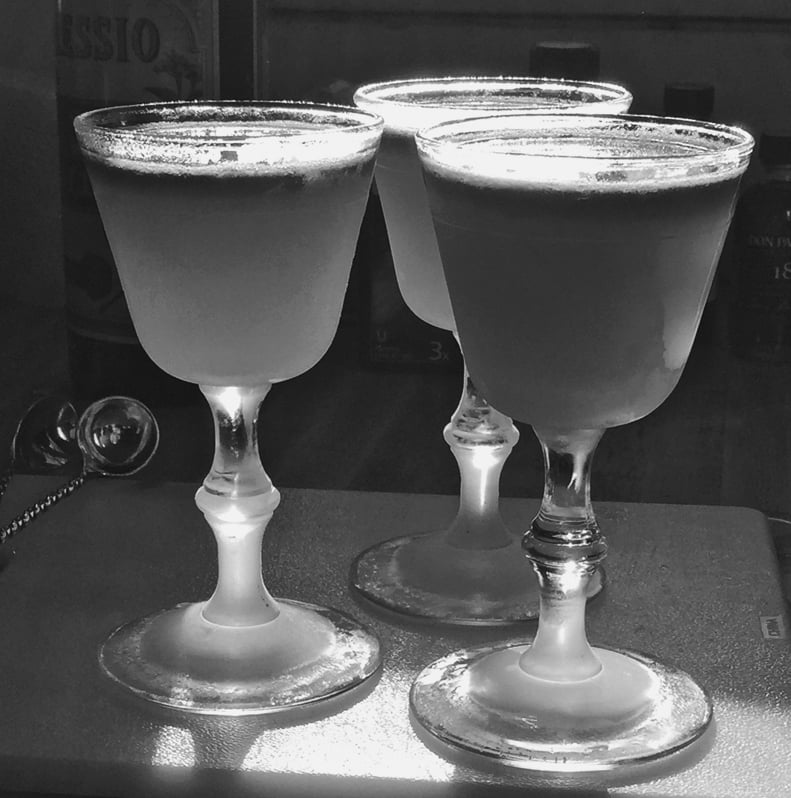To float a cocktail ingredient is to layer it on top of a drink as the crowning touch, usually by pouring it slowly and carefully over the back of a spoon onto the surface. The Pousse Café, which appears in Jerry Thomas’s 1862 Bon Vivant’s Companion, or How to Mix Drinks, is the earliest example of a floated drink—and the most extreme, as it is composed entirely of floats, each layered atop the other according to its relative density (starting with the heaviest ingredient at bottom and ending with the lightest on top). See Pousse Café. Most floated drinks, however, have only one layer.
Some floats are strictly cosmetic, such as the layer of dark rum floated on tall tropical punches; these drinks are usually served with a straw or stir stick, indicating that the drinker should not sip the top layer of straight hard liquor directly but instead mix it into the drink. This type of float may be visually appealing, but it pits the drink’s palette against the drinker’s palate. Other floats are integral to the flavor of a drink, which is enhanced by sipping the drink through the intact top layer. Chief among these is the Irish Coffee, with its floated layer of dairy cream. The New York Sour’s red wine float is another tasty example: the wine’s alcohol content is low enough to imbibe directly, and its flavor compliments the bourbon-lemon-sugar blend below as this blend is sipped through the float. See Irish Coffee and New York Sour.
Thomas, Jerry. How to Mix Drinks. New York: Dick & Fitzgerald, 1862.
By: Jeff Berry
 Wine floats on a trio of New York Sours. Source: Wondrich Collection.
Wine floats on a trio of New York Sours. Source: Wondrich Collection.
